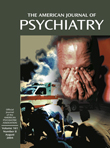To the Editor: Several groups have independently reported elevated D8/17 expression on B lymphocytes in patients with a tic or related disorders, making this a promising peripheral blood marker for these conditions
(1). However, concerns regarding insufficient sensitivity of the D8/17 assay have recently been raised
(2). This prompted us to reanalyze the data of our published study on D8/17 B cell expression in tic disorder patients compared with healthy subjects
(1). To our knowledge, our study was the only one reported thus far that used both flow cytometry and a control immunoglobulin M (IgM) monoclonal antibody. For this purpose, we used MOC32, an IgM monoclonal antibody that is directed against a neuroendocrine antigen of epithelial origin of small cell lung cancer cells. In contrast to previous studies, we did not assess a percentage of D8/17-positive B cells, since our flow cytometric analysis did not indicate a separate subpopulation of D8/17 positive B cells. Instead, we calculated D8/17 B cell overexpression by subtracting the mean fluorescence intensity produced by MOC32 from the mean fluorescence intensity produced by the D8/17-specific monoclonal antibody. At the reanalysis of our published data, there appeared to be an unexpected, close correlation between the mean fluorescence intensity produced by the control IgM, MOC32, and that by the D8/17-specific IgM, both in the 33 tic disorder patients (Pearson’s r=0.730, df=31, p<0.001), the 20 healthy comparison subjects (r=0.839, df=18, p<0.001) and in the group as a whole (r=0.753, df=51, p<0.001). Also, the median mean fluorescence intensity produced by MOC32 appeared to be significantly (Mann-Whitney U=125.0, df=51, p<0.001) higher in the 33 tic disorder patients (median=13.3 arbitrary units) than in the 20 healthy comparison subjects (median=8.9), as was the case with the median mean fluorescence intensity produced by the D8/17-specific antibody (median: patients=23.9, comparison subjects=13.4; Mann-Whitney U=89.5, df=51, p<0.001). These results could suggest that, at least in part, we did not detect D8/17 overexpression on B cells in tic disorder patients in relation to healthy comparison subjects but, rather, increased expression of receptors for the constant parts of IgM molecules (Fc-μ) on B cells, so explaining the increased binding of both the D8/17-specific monoclonal antibody and the control monoclonal antibody (MOC32). This may be due to a more general state of immune activation. Thus, these results may suggest that tic disorder patients do not express a specific, possibly genetic, susceptibility marker for experiencing autoimmune sequelae in the aftermath of streptococcal infections, but at best, show evidence of increased immune activity. Perhaps, previous positive reports were due to a nonspecific increase of the number of Fc-μ receptors on B cells, a possibility that certainly deserves further study.

